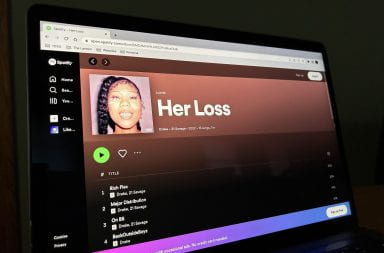If dance is intended to evoke emotions out of the audience, Drake definitely accomplishes that goal in his music video for “Hotline Bling”— as long as the emotions are confusion and perhaps a bit of discomfort.
The music video, released Oct. 19 on Apple Music, set the Internet ablaze with memes and discussion posts focused on the rapper’s unchoreographed, and questionable, solo dance scenes.
The director of the music video, Director X, defended Drake’s moves in an interview with Entertainment Weekly, saying “real men dance.” The director went on to point out that men in particular often feel too self-conscious to dance and tend to focus on their image rather than having a good time.
While Drake’s carefree dance moves don’t stand up to the likes of Michael Jackson, it is admirable and refreshing that instead of trying to look cool, he’s just dancing without fear of judgement or disapproval.
This is all fine and dandy. Most people can get down with the idea of not caring too much about what others think, and guys shouldn’t be afraid to dance. However, if “Hotline Bling” is a depiction of a “real man,” what does it say about real women?
Every female featured in the music video has something in common: they all are adorned with considerably large gluteus muscles — that’s “booty” in Drakespeak.
The video opens with a scene of a call center with only female employees. All of the ladies wear a matching uniform of tight, high-waisted jeans and a cropped, pink top that shows off their assets, and they can be seen answering phone calls, twirling their hair and taking selfies.
Another questionable scene shows only their silhouettes while they dance in slow motion and pose in unnatural, sexual positions.
The use of silhouettes and matching outfits takes away the women’s individual identities and portrays them as props more so than people.
One woman in the video, a professional dancer, definitely has more impressive moves than Drake. Yet in the scenes she shares with the rapper, she is treated as more of a sexual object than a dance partner. Drake can be seen picking her up while she straddles him and using her butt as a pillow while she lies on the floor and twerks.
Unfortunately, overly sexualized depictions of women is the norm in the hip-hop genre and the music industry in general. Although many people praise the curve-loving movement led by women like Nicki Minaj for moving away from the thin, model-type bodies typically seen in popular culture, it’s just a step in a different, but still wrong, direction.
Body movements encouraging women to love their curves and widespread images of thin models all contradict each other. Instead, women, and everyone else, should be encouraged to love themselves. Bottom line: What they look like shouldn’t be a part of the discussion.
Ideally this attitude will one day be adopted by the masses and people can stop talking about the female physicality altogether. After all, women are more than just bodies.

